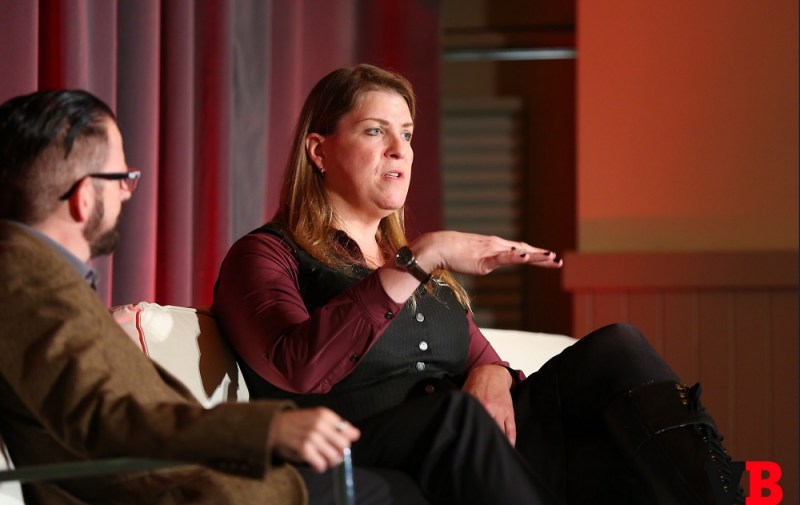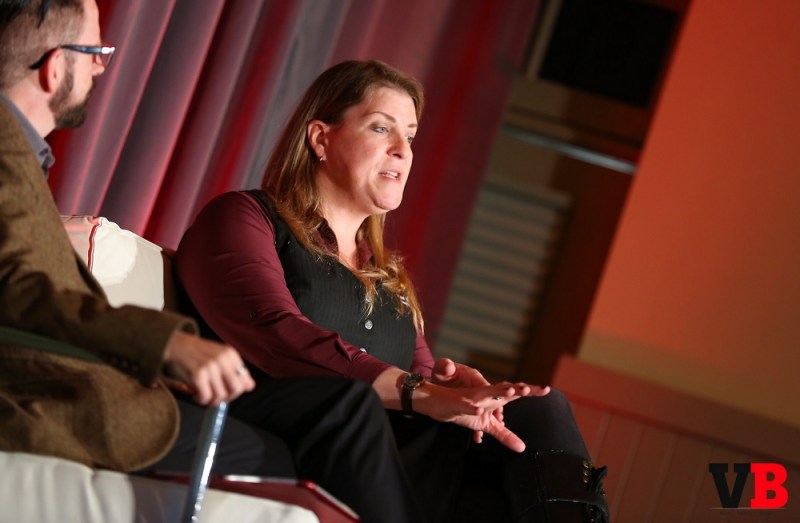Nolan Bushnell: I’ve been worried about this issue of women programmers, women in the game industry. I feel like the problems are starting way back there, when young women choose a pathway. I’ve tried to hire women at my game companies all my life. It’s been really hard. We’ve advertised for a certain kind of programmer, and the people who show up are 100 percent men. My question is, what can we do to encourage women very early on to start programming? That’s when the DNA is set.
Edwards: Absolutely. I can surround my answer with some other context. After the Gamergate folks targeted Intel, at CES this year Intel announced their $300 million initiative for diversity in technology. They want to change the landscape not just in the games industry, but in the entire technology sector. In my opinion, the Gamergate folks unwittingly picked one of the very best companies you could possibly pick to go after if you wanted a response. The reach of Intel throughout the entire tech sector is vast.
It’s great to see that Brian and the others at Intel have said, “We’re not just going to make up for this one issue with advertising on Gamasutra. We’re going to invest in this problem and fix this problem.” Part of that investment is looking at the entire pipeline that’s broken. One thing I’ve seen going on all over the place is STEM programs for girls in elementary school. A lot of girls that age are super excited about science and technology. It’s cultivated to some degree, but what we’ve seen is that around junior high, somewhere in that age, their interest just plummets. Whether it’s social pressure or other things, we need programs to serve as a bridge that gets them through and keeps them engaged after elementary school.
The IGDA and other organizations are working with Intel and other companies. My number one hope is that with Intel’s bold move, other companies will step forward. I’ve seen other companies within the game industry come forward and say, “Don’t forget about us. We have STEM programs. We’re investing in this and investing in that.” We’re trying to build a large-scale road map that focused on acquisition and retention of women and more diverse people within the game industry. We want to identify who is doing what along the spectrum, whether it’s existing companies or industry organizations.
AI Weekly
The must-read newsletter for AI and Big Data industry written by Khari Johnson, Kyle Wiggers, and Seth Colaner.
Included with VentureBeat Insider and VentureBeat VIP memberships.
One thing we’ve recognized is the fact that that pipeline needs to be fixed. One way of fixing it we’ve seen is that there are so many programs out there—In just the last five or 10 years, we’ve seen this explosion of STEM and STEAM education programs, which are fantastic. But they’re so disjointed. There’s a great program back east that doesn’t know anything about its counterparts out west that are doing the same thing. If they talk to one another they can coordinate and build something better.
Another idea is trying to get programs focused on STEM education at the elementary school level. We have more at the middle school and high school level, but how can we connect them and make sure that there’s a handoff to keep students going?
We have a lot of initiatives going on. We have the Higher Education Video Game Alliance. They’re very much aware of the problem as well. We’re all starting to coordinate. The thing is, it took this issue, this very vile situation coming up over the last several months, to finally get people to decide that it’s time to do something.
Audience question: From a pragmatic standpoint, what can regular people do day-to-day to affect change around diversity in gaming? And what’s your vision for how you see this playing out in the future? When will we see significant change toward closing the gap and making our industry as diverse as we want it to be?
Edwards: To your first question, on an everyday basis, the fact that we’re aware that this issue is out there—For a lot of people in the industry, on a day-to-day basis it doesn’t affect them. They’re of the dominant gender, the dominant skin color, the dominant social class, whatever it might be. It’s not something that affects them so much. But being aware is number one. That’s one thing that’s come out of the last few months.
It’s important to be aware of what goes on as far as workplace issues – hiring practices, for example. I know most companies have very clear policies on inclusion and diversity, but what we see is that in the actual hiring process, there tends to be a breakdown at times. They can have an array of candidates that may include people of diversity, but we know from sociological studies that typically what happens is a hiring manager–When it comes down to that kernel of decision-making, they tend to go with the person who’s more like them, because they think they’re a better fit for the team. “All my team are men right now, so if I hire a woman it’ll be a problem.” In fact, studies have shown the exact opposite result. When you have a woman on a team of men, they tend to bring their A game. There’s that anthropological tendency to want to impress her, something we can’t quite control. They tend to elevate and do better.
On the game creation side, it’s important for us to ask questions. When an artist creates the typical exaggerated female figure for a game, ask the question – why is that necessary in our game? It’s easy to do, but do we have to do it that way? Why can’t we just make her normal? It’s important to raise questions like that.
In the long term, the IGDA’s stated goal is that we’d like to double the number of women in the industry in a decade. That’s a space-program goal, but that’s what space programs are for. They’re not supposed to be easy. We’re trying to seize on this goal to get to a point where, by 2025, we’ll see more women in the industry, more people of color in the industry—Basically an industry that better reflects those who are playing games right now.
With the growth we’re seeing in emerging markets, game players are only going to become more diverse over the next 10 years, incredibly diverse. We have to be prepared for that. We can’t just think about North American content. This is an issue that needs to get more attention, but at the same time, it’s not just about gender diversity. It’s about diversity of ethnicity, diversity of geography, diversity of cultures. We need to be thinking about all of those things.
VentureBeat's mission is to be a digital town square for technical decision-makers to gain knowledge about transformative enterprise technology and transact. Learn More


